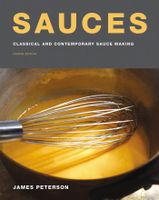Advertisement
Olive Oil
Published 1991
Of all oils, olive oil is the most versatile and essential for sauce making and general cooking. It is available in different grades that are based on how the oil is extracted from the olive, and the amount of oleic acid it contains. Oleic acid gives olive oil a harsh, biting feel in the mouth. The best-quality olive oil, extra-virgin (vierge extra in French, extra vergine in Italian), contains 1 percent or less oleic acid and usually has the words “first cold pressed” or “première pression à froid” on the label. This means that cold pressure alone, rather than heat or chemicals, has been used to extract the oil from the olives. Extra-virgin olive oil is a completely natural product of often startling delicacy and complexity, which are influenced by climate, soil, the age of the trees, the vintage, and other factors. There are no reliable rules as to which oils—Italian, Spanish, French, Greek—are the best; like wine, each oil needs to be judged on its own.


